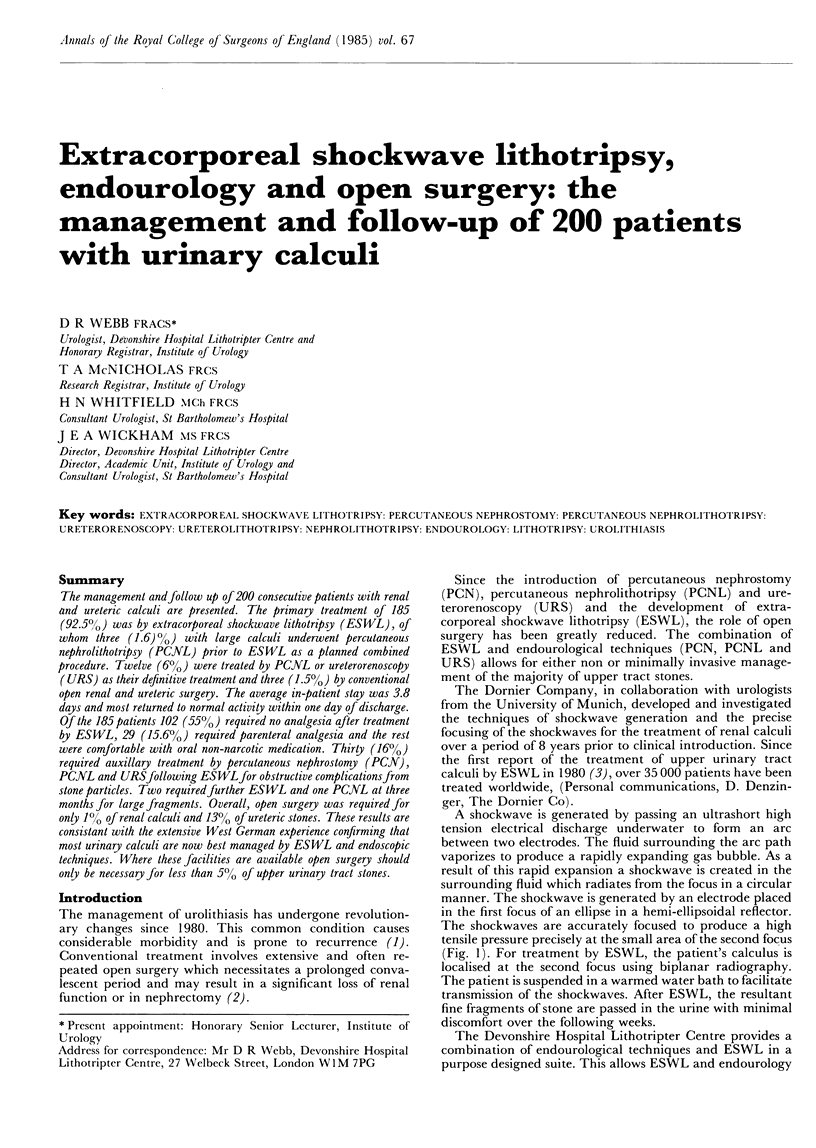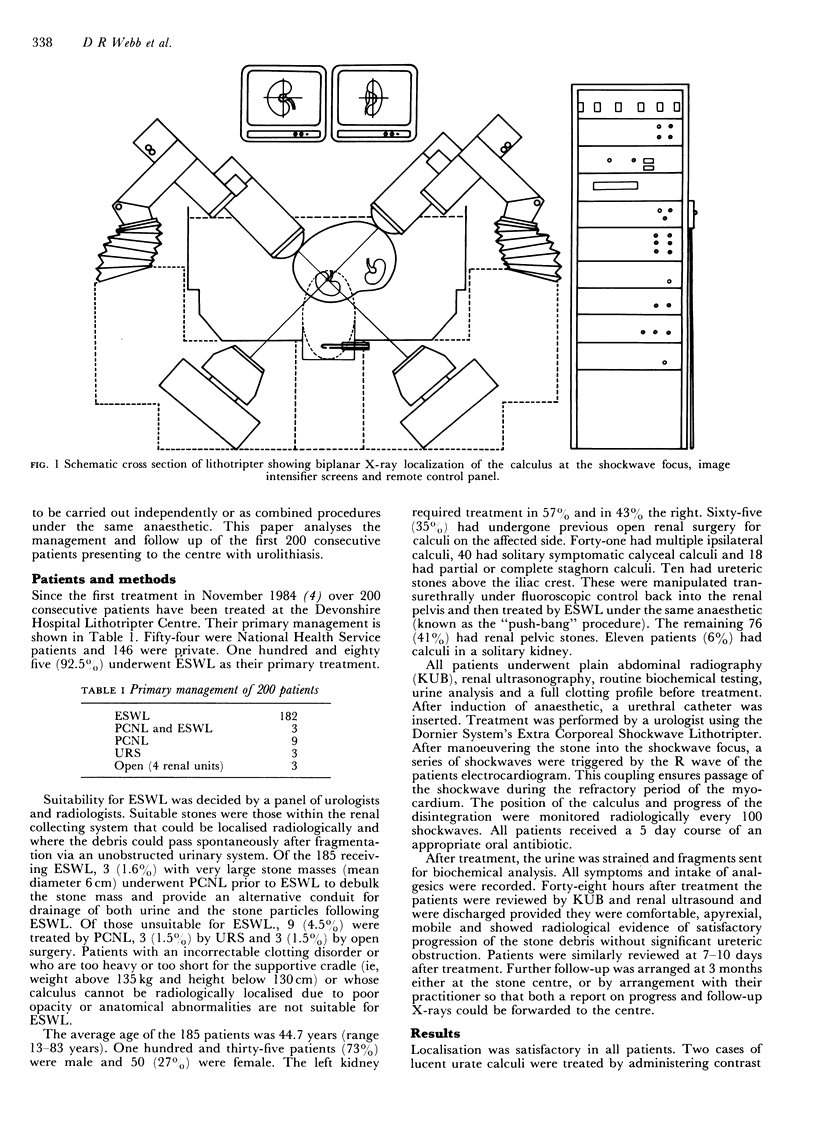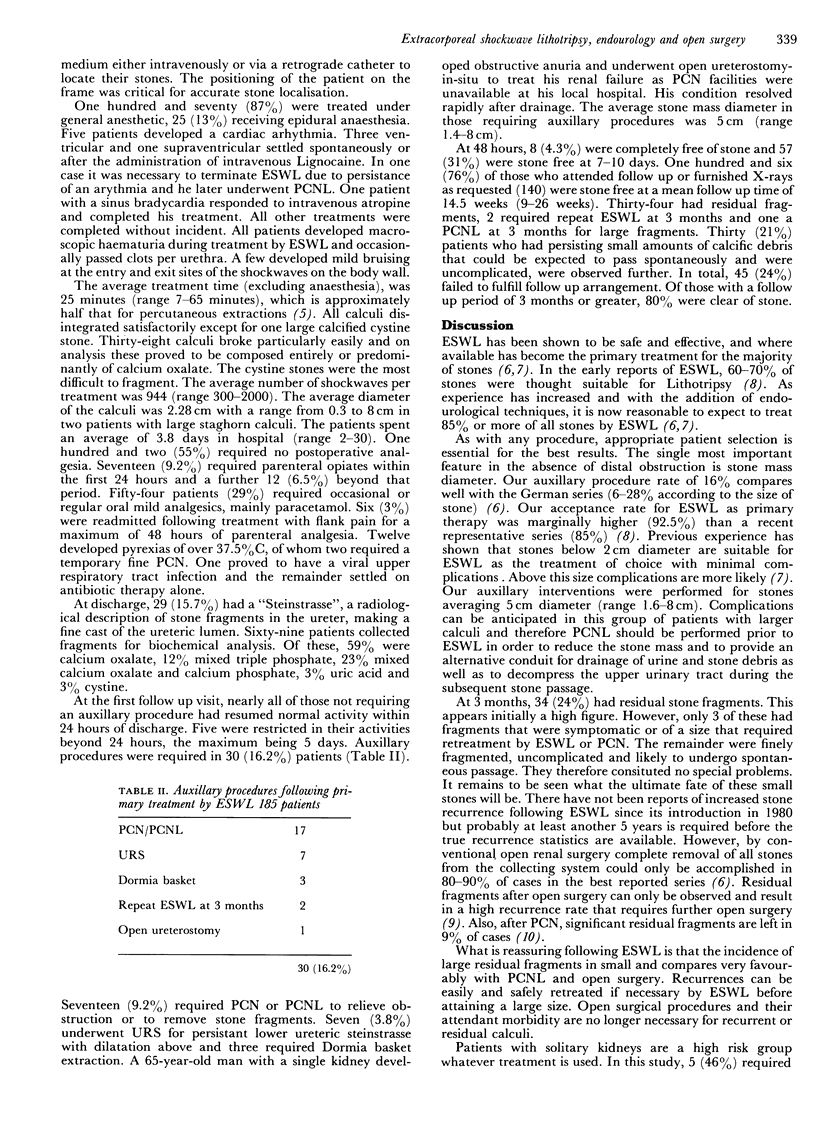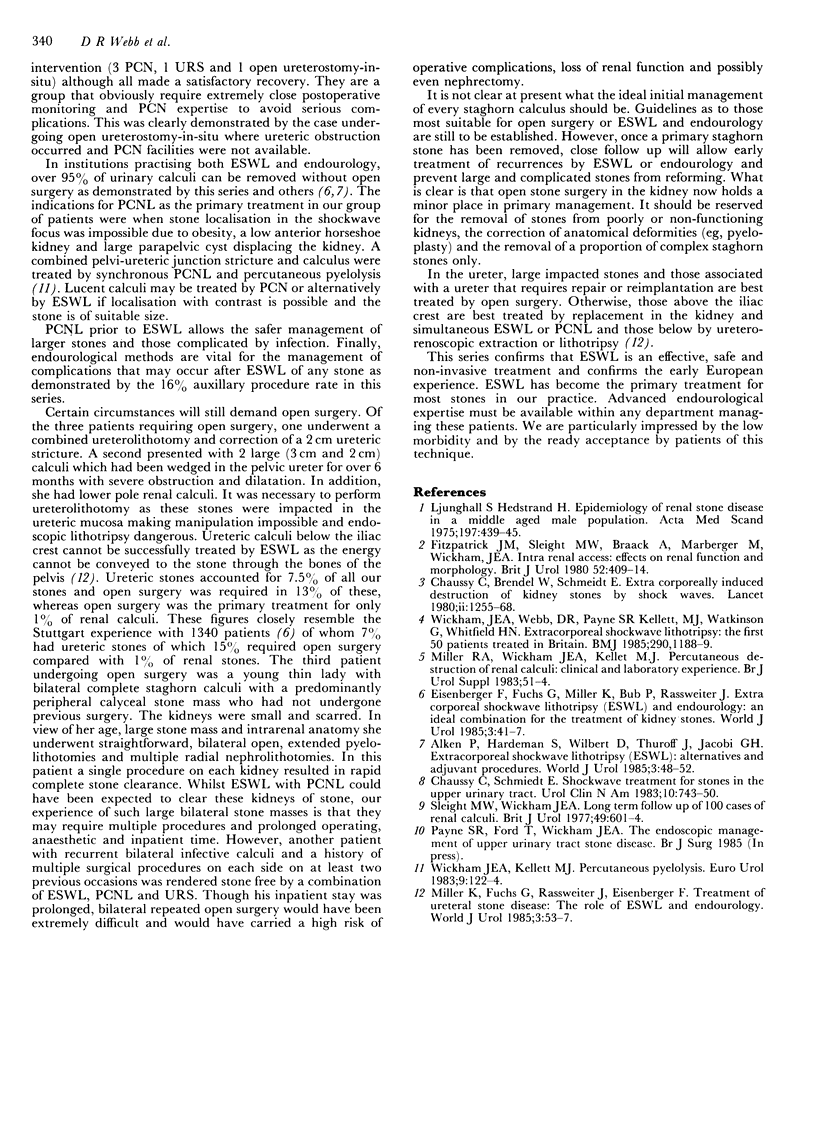Abstract
The management and follow up of 200 consecutive patients with renal and ureteric calculi are presented. The primary treatment of 185 (92.5%) was by extracorporeal shockwave lithotripsy (ESWL), of whom three (1.6)%) with large calculi underwent percutaneous nephrolithotripsy (PCNL) prior to ESWL as a planned combined procedure. Twelve (6%) were treated by PCNL or ureterorenoscopy (URS) as their definitive treatment and three (1.5%) by conventional open renal and ureteric surgery. The average in-patient stay was 3.8 days and most returned to normal activity within one day of discharge. Of the 185 patients 102 (55%) required no analgesia after treatment by ESWL, 29 (15.6%) required parenteral analgesia and the rest were comfortable with oral non-narcotic medication. Thirty (16%) required auxillary treatment by percutaneous nephrostomy (PCN), PCNL and URS following ESWL for obstructive complications from stone particles. Two required further ESWL and one PCNL at three months for large fragments. Overall, open surgery was required for only 1% of renal calculi and 13% of ureteric stones. These results are consistant with the extensive West German experience confirming that most urinary calculi are now best managed by ESWL and endoscopic techniques. Where these facilities are available open surgery should only be necessary for less than 5% of upper urinary tract stones.
Full text
PDF



Selected References
These references are in PubMed. This may not be the complete list of references from this article.
- Chaussy C., Schmiedt E. Shock wave treatment for stones in the upper urinary tract. Urol Clin North Am. 1983 Nov;10(4):743–750. [PubMed] [Google Scholar]
- Fitzpatrick J. M., Sleight M. W., Braack A., Marberger M., Wickham J. E. Intrarenal access: effects on renal function and morphology. Br J Urol. 1980 Dec;52(6):409–414. doi: 10.1111/j.1464-410x.1980.tb03078.x. [DOI] [PubMed] [Google Scholar]
- Ljunghall S., Hedstrand H. Epidemiology of renal stones in a middle-aged male population. Acta Med Scand. 1975 Jun;197(6):439–445. doi: 10.1111/j.0954-6820.1975.tb04948.x. [DOI] [PubMed] [Google Scholar]
- Sleight M. W., Wickham J. E. Long-term follow-up 100 cases of renal calculi. Br J Urol. 1977;49(7):601–604. doi: 10.1111/j.1464-410x.1977.tb04538.x. [DOI] [PubMed] [Google Scholar]
- Wickham J. E., Webb D. R., Payne S. R., Kellet M. J., Watkinson G., Whitfield H. N. Extracorporeal shock wave lithotripsy: the first 50 patients treated in Britain. Br Med J (Clin Res Ed) 1985 Apr 20;290(6476):1188–1189. doi: 10.1136/bmj.290.6476.1188. [DOI] [PMC free article] [PubMed] [Google Scholar]


